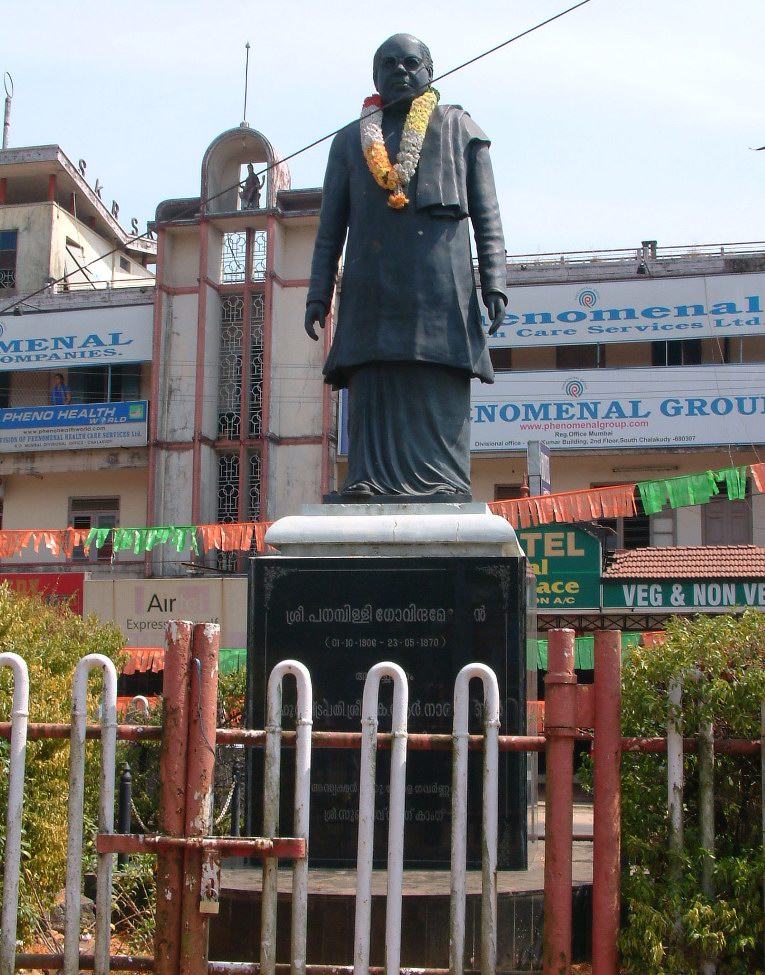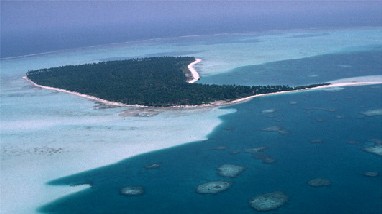|
Travancore–Cochin
Travancore–Cochin, or Thiru–Kochi, was a short-lived state of India (1949–1956). It was originally called United State of Travancore and Cochin following the merger of two former kingdoms, Travancore and Cochin on 1 July 1949. Its original capital was Thiruvananthapuram. It was renamed State of Travancore–Cochin in January 1950. Travancore merged with erstwhile princely state of Cochin to form Travancore–Cochin in 1950. The five Tamil-majority Taluks of Vilavancode, Kalkulam, Thovalai, Agastheeswaram, and Sengottai were transferred from Travancore-Cochin to Madras State in 1956. The Malayalam-speaking regions of the Travancore–Cochin merged with the Malabar District (excluding Laccadive & Minicoy Islands) and the Kasaragod Taluk of South Canara district in Madras State to form the modern Malayalam-state of Kerala on 1 November 1956, according to the States Reorganisation Act, 1956 passed by the Government of India. History Paravur T. K. Naraya ... [...More Info...] [...Related Items...] OR: [Wikipedia] [Google] [Baidu] |
States And Union Territories Of India
India is a federal union comprising 28 states and 8 union territories, with a total of 36 entities. The states and union territories are further subdivided into districts and smaller administrative divisions. History Pre-independence The Indian subcontinent has been ruled by many different ethnic groups throughout its history, each instituting their own policies of administrative division in the region. The British Raj mostly retained the administrative structure of the preceding Mughal Empire. India was divided into provinces (also called Presidencies), directly governed by the British, and princely states, which were nominally controlled by a local prince or raja loyal to the British Empire, which held ''de facto'' sovereignty ( suzerainty) over the princely states. 1947–1950 Between 1947 and 1950 the territories of the princely states were politically integrated into the Indian union. Most were merged into existing provinces; others were organised into ... [...More Info...] [...Related Items...] OR: [Wikipedia] [Google] [Baidu] |
Panampilly Govinda Menon
Panampilly Govinda Menon (1 October 1906 – 23 May 1970) was an Indian politician, freedom fighter, and lawyer. He was born in a village near Kathikkudam and completed graduation from '' St.Thomas College, Thrissur''. He started his legal practice as a junior to Adv. M. C. Joseph. He was the first treasurer of Kerala Yukthivadi Sangham. He moved his practice to Ernakulam afterwards. Later in the 1930s he became prominent in the politics of the Kingdom of Cochin and served briefly as the Prime Minister of Cochin state in 1947. After the union of Travancore and Cochin, he served as minister for education under Parur T. K. Narayana Pillai and minister for finance under A. J. John, Anaparambil. He was the Chief Minister of Travancore-Cochin in 1955–1956. He represented Mukundapuram (Lok Sabha constituency) from 1962 until his death. He became Union Minister for Law and Railways (1969–1970) and Minister of state for Food and Agriculture. He was also the political mentor o ... [...More Info...] [...Related Items...] OR: [Wikipedia] [Google] [Baidu] |
Chithira Thirunal Balarama Varma
Sree Padmanabhadasa Sree Chithira Thirunal Balarama Varma , popularly known as Sree Chithira Thirunal, was the last ruling Maharaja of the Princely State of Travancore, in southern India until 1949 and later the Titular Maharajah of Travancore until 1991. Sree Chithira Thirunal was the eldest son of Junior Maharani of Travancore, H.H. Sree Padmanabhasevini Vanchidharmavardhini Rajarajeshwari Maharani Moolam Thirunal Sethu Parvathi Bayi, and Sri Pooram Nal Ravi Varma Koyi Thampuran of the Royal House of Kilimanoor. He was privately educated, and became the Maharajah of Travancore, at the age of 12, upon the death of his maternal great uncle, the then Maharajah of Travancore Sree Moolam Thirunal, on 7 August 1924. In 1936, established the University of Travancore (now the University of Kerala) in 1937. The Women Studies Journal ''Samyukta'' reports that, 40% of the Travancore's revenue was set apart for education, during the reign of Sree Chithira Thirunal. Thiruvananthapuram In ... [...More Info...] [...Related Items...] OR: [Wikipedia] [Google] [Baidu] |
Kingdom Of Cochin
The Kingdom of Cochin, named after its capital in the city of Kochi (Cochin), was a kingdom in the central part of present-day Kerala state. It commenced at the early part of the 12th century and continued to rule until 1949, when monarchy was abolished by the dominion of India. Historically, the capital of Cochin was in Kodungallur (Cranganore), but in 1341 the capital was moved to Cochin inorder to remedy a disastrous flood. By the early 15th century, Cochin lost its ability to fully defend itself. By the late 15th century, the Cochin kingdom shrank to its minimal extent as a result of invasions by the Zamorin of Calicut. When Portuguese armadas arrived in India, the Kingdom of Cochin had lost its vassals to the Zamorins, including Edapalli and Cranganore, the later of which had even been at the centre of the kingdom historically. Cochin was looking for an opportunity to preserve its independence, which was at risk. King Unni Goda Varma warmly welcomed Pedro Álvares Cabra ... [...More Info...] [...Related Items...] OR: [Wikipedia] [Google] [Baidu] |
Travancore
The Kingdom of Travancore ( /ˈtrævənkɔːr/), also known as the Kingdom of Thiruvithamkoor, was an Indian kingdom from c. 1729 until 1949. It was ruled by the Travancore Royal Family from Padmanabhapuram, and later Thiruvananthapuram. At its zenith, the kingdom covered most of the south of modern-day Kerala ( Idukki, Kottayam, Alappuzha, Pathanamthitta, Kollam, and Thiruvananthapuram districts, and some portions of Ernakulam district), and the southernmost part of modern-day Tamil Nadu (Kanyakumari district and some parts of Tenkasi district) with the Thachudaya Kaimal's enclave of Irinjalakuda Koodalmanikyam temple in the neighbouring Kingdom of Cochin. However Tangasseri area of Kollam city and Anchuthengu near Attingal in Thiruvananthapuram district, were British colonies and were part of the Malabar District until 30 June 1927, and Tirunelveli district from 1 July 1927 onwards. Travancore merged with the erstwhile princely state of Cochin to form Travancore-Cochin i ... [...More Info...] [...Related Items...] OR: [Wikipedia] [Google] [Baidu] |
Malabar District
Malabar District, also known as Malayalam District, was an administrative district on the southwestern Malabar Coast of Bombay Presidency (1792-1800) and Madras Presidency (1800-1947) in British India, and independent India's Madras State (1947-1956). It was the most populous and the third-largest district in the erstwhile Madras State. The British district included the present-day districts of Kannur, Kozhikode, Wayanad, Malappuram, Palakkad (excluding Chittur town), Chavakad Taluk and parts of Kodungallur Taluk of Thrissur district (former part of Ponnani Taluk), and Fort Kochi area of Ernakulam district in the northern and central parts of present Kerala state, the Lakshadweep Islands, and a major portion of the Nilgiris district in Tamil Nadu. The detached settlements of Tangasseri and Anchuthengu, which were British colonies within the kingdom of Travancore in southern Kerala, also formed part of Malabar District until 1927. Malayalam was the administrative as well as ... [...More Info...] [...Related Items...] OR: [Wikipedia] [Google] [Baidu] |
Madras State
Madras State was a state of India during the mid-20th century. At the time of its formation in 1950, it included the whole of present-day Tamil Nadu (except Kanyakumari district), Coastal Andhra, Rayalaseema, the Malabar region of North and central Kerala, Bellary, South Canara and Kollegal. Coastal Andhra and Rayalaseema were separated to form Andhra State in 1953, while South Canara and Bellary districts along with the Kollegalam taluka of Coimbatore district were merged with Mysore State, and Malabar District with the State of Travancore-Cochin to form Kerala in 1956. Post State Reorganization in 1956, the remaining Madras State was renamed to Tamil Nadu on January 14, 1969. History After Indian Independence, the Madras Presidency became the Madras Province on 15 August 1947. On 26 January 1950, it was formed as Madras State by the Government of India. As a result of the 1956 States Reorganisation Act, the state's boundaries were re-organized following linguistic line ... [...More Info...] [...Related Items...] OR: [Wikipedia] [Google] [Baidu] |
Malayalam
Malayalam (; , ) is a Dravidian language spoken in the Indian state of Kerala and the union territories of Lakshadweep and Puducherry (Mahé district) by the Malayali people. It is one of 22 scheduled languages of India. Malayalam was designated a "Classical Language of India" in 2013. Malayalam has official language status in Kerala, and Puducherry ( Mahé), and is also the primary spoken language of Lakshadweep, and is spoken by 34 million people in India. Malayalam is also spoken by linguistic minorities in the neighbouring states; with significant number of speakers in the Kodagu and Dakshina Kannada districts of Karnataka, and Kanyakumari, district of Tamil Nadu. It is also spoken by the Malayali Diaspora worldwide, especially in the Persian Gulf countries, due to large populations of Malayali expatriates there. There are significant population in each cities in India including Mumbai, Bengaluru, Delhi, Kolkata, Pune etc. The origin of Malayalam remains a matter of ... [...More Info...] [...Related Items...] OR: [Wikipedia] [Google] [Baidu] |
Thiruvananthapuram
Thiruvananthapuram (; ), also known by its former name Trivandrum (), is the capital of the Indian state of Kerala. It is the most populous city in Kerala with a population of 957,730 as of 2011. The encompassing urban agglomeration population is around 1.68 million. Located on the west coast of India near the extreme south of the mainland, Thiruvananthapuram is a major information technology hub in Kerala and contributes 55% of the state's software exports as of 2016. Referred to by Mahatma Gandhi as the "Evergreen city of India", the city is characterised by its undulating terrain of low coastal hills. The present regions that constitute Thiruvananthapuram were ruled by the Ays who were feudatories of the Chera dynasty. In the 12th century, it was conquered by the Kingdom of Venad. In the 18th century, the king Marthanda Varma expanded the territory, founded the princely state of Travancore, and made Thiruvananthapuram its capital. Travancore became the most dominan ... [...More Info...] [...Related Items...] OR: [Wikipedia] [Google] [Baidu] |
Agastheeswaram
Agastheeswaram is a panchayat town in Kanniyakumari district in the Indian state of Tamil Nadu. History Agasteeswaram is named after Sage Agastya who had visited this place to teach Ramayana. Most of the people from this village are well educated when compared with other districts in Tamil Nadu. Vivekanandha college is located in Agasteeswararam. Along with the talukas of Thovalay, Kalculam, Eraneel and Velavancode, Agasteeswaram was a part of the southern division (aka Padmanabhapuram division) of the erstwhile Kingdom of Travancore until its union with Cochin in 1949 and continued to be a part of the state of Travancore- Cochin until November 1, 1956. File:Agastya.jpg, Sage Agastya Agastheeswaram Below are the words extracted from the Travancore state manual about the Agastisvaram Nadan rich chieftain who enjoyed special benefits from the Trovancore Rajah, that family belonged to the sub-caste Nadan an endogamous group among the Nadars. The Travancore state manual says "T ... [...More Info...] [...Related Items...] OR: [Wikipedia] [Google] [Baidu] |
Laccadive Islands
The Laccadive or Cannanore Islands are one of the three island subgroups in the Union Territory of Lakshadweep, India. It is the central subgroup of the Lakshadweep, separated from the Amindivi Islands subgroup roughly by the 11th parallel north and from the atoll of Minicoy (Maliku)—far to the south—by the 9 Degree or Mamala Channel. Formerly the Union Territory of Lakshadweep was known as Laccadive, Minicoy, and Amindivi Islands, a name that was changed to Lakshadweep by an act of Parliament in 1973. The Laccadive subgroup had been known earlier as the "Cannanore Islands" after the coastal town of Cannanore (Kannur). The name originated in the fact that while the northern group of Amindivi had stopped in 1784 being a vassal state of the Kannur Kingdom (Arakkal) in exchange for fealty to Tippu Sultan's Kingdom of Mysore, the southern group remained loyal to Kannur. Geography The Laccadive subgroup includes the island of Agatti, with Agatti Aerodrome, the only airp ... [...More Info...] [...Related Items...] OR: [Wikipedia] [Google] [Baidu] |




.jpg)


